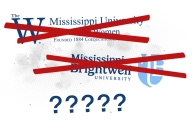You have /5 articles left.
Sign up for a free account or log in.
A study of women’s colleges and universities was, in many ways, a perfect intersection of academic interest and passion for Kristen Renn.
Renn, a professor of higher, adult and lifelong learning at Michigan State University, has spent her academic career studying student affairs. She’s also an alumna of Mount Holyoke College, the oldest continuing women’s educational institution in the U.S.
Her book, Women’s Colleges and Universities in a Global Context (Johns Hopkins University Press), was published last month.
While the number of women’s colleges in the U.S. and Europe continues to shrink, women’s institutions are growing in size and number in other parts of the world. In her book, Renn, who’s also associate dean of undergraduate studies and director of student success initiatives at Michigan State, analyzes the global significance of single-sex higher education. She traveled to 13 women’s colleges in 10 countries -- selected to provide diversity in geography, culture and politics -- to compare the role of women’s colleges in different parts of the world. (See box below.)
Renn responded via email to questions about the contemporary roles and future of single-sex higher education for women.
Q: In the U.S., women’s colleges stem from private higher education -- is that the same for the sector in other parts of the world?
A: In many other countries, single-sex higher education is represented in the public sector. State-supported women’s institutions are common in the Middle East, Afghanistan, Pakistan, and India. There are state-supported women’s universities in China and Japan, though they are rare. A small number of residential women’s colleges exist within large public universities in Europe, Australia, and Canada. The U.S. had a number of public women’s universities in the South (e.g., Mississippi University for Women, Texas Woman’s University, Florida State University), but there are no longer any free-standing public women’s institutions in the U.S. [Those three institutions all continue today as coeducational institutions.] I added brackets to avoid implying that these places are gone -sj
Q: In regions where single-sex institutions are the only feasible option, you write that women’s colleges are critical in providing access to higher education. Are these institutions equal to ones serving men, in terms of access to funding, scholars and available courses?
A: The question of access leads necessarily to questions about the quality of education that is accessible. Among the institutions I studied, some were at the top of national rankings for particular areas of study. A few number among world-class institutions in terms of faculty, curriculum, and facilities. A handful would be comparable in quality to coeducational colleges and universities serving students of similar quality, and a few were clearly not up to the standards of local coeducational institutions.
I found that there was substantial public and private investment in maintaining high quality at women’s institutions in regions in which single-sex higher education predominates. In these settings, a number of faculty told me that they found the female students of higher quality than male students at peer institutions, because the women worked harder whereas men assumed they would have careers awaiting them at graduation, regardless of their academic achievements. Although women sometimes faced restrictions in curriculum based on what was available at the single-sex institutions, the quality of the education offered did seem to be on par with that at the parallel men’s institutions, at least as described by my research participants.
Renn's 13 Sites
Australian Women’s College, Australia
Canadian University College, Canada
Women’s Federation University, China
Catholic College of Mumbai, India
Elite College, India
Urban Comprehensive University, India
Collegio delle Donne, Italy
National Women’s University, Japan
Suburban College, Japan
Kenyan Institute for Science and Technology, Kenya
Korean Women’s University, South Korea
Middle East Women’s College, United Arab Emirates
University Women’s College, United Kingdom
Q: Do women’s colleges play a role in opening up fields when females are under-represented, such as engineering or laboratory science? Should they play a bigger role?
A: Compared to coeducational peer institutions, women’s colleges in every country produce disproportionately high numbers of alumnae who go into fields in which women are underrepresented: STEM, business, medicine, law, business, politics. They also provide a faculty job market for female scientists who face discrimination and harassment in some coeducational university settings. For nearly two centuries, women’s colleges and universities have made substantial contributions in these areas, and they continue to have higher percentages of their students and graduates go into these fields.
Q: You write that women’s colleges help female students find their voices and develop their intellectual abilities and leadership skills. What factors make women’s colleges better able to do that than coeducational institutions?
A: The easy answer is that women have to speak up, step up, and lead because there are no men there to get things done if they don’t. The deeper answer lies in the power of taking female students seriously as intellectuals and leaders, in environments that reinforce leadership development and gender empowerment at every turn. Campus icons, founders, and famous alumnae are held up as examples. There are higher percentages of female faculty and administrators at women’s institutions, so role models are easy to find on campus. The expectation that students at these colleges and universities will be successful academically, socially, and as leaders is inescapable – to the mild chagrin of some students I interviewed who nodded toward the portrait of an alumna of their institution who is a well-known world leader, pointing out that it was unlikely that they, too, could reach that level even though it was clear that alma mater expected them to.
Q: You share a story in the book about a women’s college in India where students marched to protest against a culture of sexual harassment there. What are some other examples of modern empowerment movements in which women’s colleges have been leaders?
A: Women’s college alumnae around the world have been leaders in social justice and political movements. The institutions themselves – through faculty and students – have taken leading roles in efforts to stop child marriage in India and Pakistan and to end female genital mutilation (and provide medical treatment necessary as a result of it) in Sudan. Unsurprisingly, women’s colleges and universities have been instrumental in movements to increase literacy rates and education among girls and women around the world, including in China, India, the Middle East, Afghanistan, and Pakistan. Not every literate young woman in these countries will stay in school through higher education, but literacy and numeracy enable their participation in civic, economic, and community life in ways that may increase opportunities for their own daughters and sons.
Q: In identifying the roles of women’s colleges, the fifth and final one you write about is their symbolic role, in which women’s colleges represent something both progressive and conservative. How so?
A: The symbolism exists internally to some institutions, within national systems of higher education, and across the women’s college sector – if there is such a thing – internationally. I wrote, for example, about the traditional concept of “wise wife, good mother” in Japanese women’s universities, which exists as a (usually) tacit philosophical undercurrent to progressive curriculums in science, business, and gender studies. The tension exists within national systems, such as in the UAE, in which access to the women’s institute in my study was highly restricted and parents were assured that their daughters could not leave campus alone during the day; yet national economic and education policy calls for increasing girls’ and women’s education and participation in the workforce.
This relatively cloistered campus was preparing women for the world of work in business and industry, which they would enter without armed guards and parental permission to step off the grounds. Across the sector of women’s colleges and universities I observed paternalism and sexism (taking care of and protecting “our girls,” who were not strong enough for a “real higher education”) as well as progressive policies and practices that in the U.S. I would call feminist. All of these apparent contradictions make up the whole of women’s higher education institutions in the early 21st century – it’s a complex stew of progressive and conservative paradoxes.
Q: Women’s colleges in the U.S. have dropped from a high of more than 300 five decades ago to just 45 today. Will other parts of the world -- such as India or Southeast Asia, where women’s colleges are plentiful today -- see a similar drop in the future?
A: It is hard to imagine that over the next several decades there will not be a shift toward coeducation in these contexts. As families and communities become more comfortable with mixed-gender higher education it seems inevitable. Yet, there is abundant evidence from the US and elsewhere that equal access does not mean equal treatment and equitable outcomes. Until larger systems of gender oppression also shift, there will be a role for women’s colleges and universities, just as there are ways that women’s institutions in the US, Canada, Australia, the UK and elsewhere make unique contributions to the higher education landscape today.




